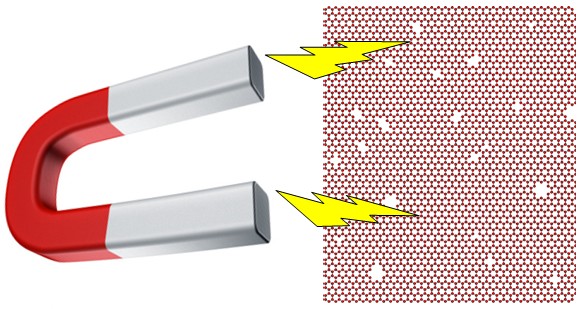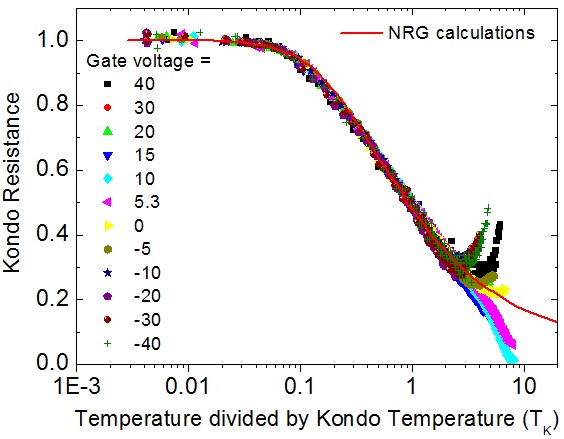
Magnetism is
typically associated with “transition metal” elements such as nickel or iron,
from the middle of the periodic table.
These elements contain d electrons which are localized on the atoms, and have a
“spin” or magnetic moment. Carbon
contains no d
electrons and is not normally magnetic.
Maryland MRSEC researchers showed that removing a carbon atom from graphene, a single atom-thick
layer of graphite, creates a localized spin, and this spin interacts strongly
with conduction electrons in the graphene through the Kondo effect (see Figure), a key ingredient
for producing ferromagnetism. The
discovery could lead to new electronic or spintronic devices made entirely of carbon.

Figure Caption:
Temperature dependence of the extra resistance due to defects in graphene. The curves can be scaled by a single
parameter (the Kondo temperature (TK) which ranges from
30 Kelvin to 90 Kelvin, and follow the theory of the Kondo effect (red
line). The Kondo temperature is
comparable to that found in metals with magnetic impurities, and indicates
strong coupling of the electrons to the impurities.